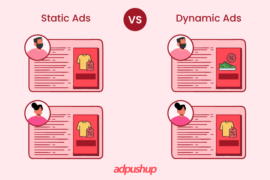Look at the seven best Examples of Programmatic Advertising campaigns that deserve your attention.
Programmatic advertising has become increasingly popular for businesses to reach their target audiences online. By leveraging data and automation technology, programmatic advertising allows advertisers to reach their desired audiences with precision and scale, resulting in higher engagement rates and better returns on investment.
In today’s digital age, businesses need to understand and leverage programmatic advertising to stay competitive in their industries.
By analyzing what made these campaigns successful and identifying key takeaways, we hope to provide valuable insights you can apply to your programmatic advertising efforts.
Also Read: Programmatic Advertising: A Quick Guide For Publishers
7 Best Examples of Programmatic Advertising: An Overview for Publishers
Here are seven examples of programmatic advertising campaigns that have been successful:
Spotify
Spotify uses programmatic advertising to deliver personalized ads to its users based on their listening habits and preferences. By leveraging data on user behavior and music preferences, Spotify can deliver highly targeted and relevant ads to their users, resulting in higher engagement rates and better returns on investment.
McDonald’s
McDonald’s used programmatic advertising to target specific demographics. By leveraging data on consumer behavior and purchasing habits, McDonald’s delivered ads to the right people at the right time, resulting in increased sales and revenue.
Coca-Cola
Coca-Cola used programmatic advertising to deliver personalized ads to users during the 2018 World Cup. By analyzing user behavior and preferences data, Coca-Cola delivered highly targeted ads to users in different regions and languages, increasing engagement and brand awareness.
Airbnb
Airbnb uses programmatic advertising to target users interested in traveling to specific locations. By leveraging user behavior and search history data, Airbnb can deliver ads to users who are more likely to book a stay, resulting in increased bookings and revenue.
Amazon
Amazon uses programmatic advertising to deliver personalized ads to their users based on their browsing and purchasing history. By analyzing user behavior and preferences data, Amazon can deliver highly targeted ads that are more likely to result in a purchase, resulting in increased sales and revenue.
Nike
Nike used programmatic advertising to deliver personalized ads to users based on their fitness goals and preferences. By leveraging user behavior and fitness activity data, Nike delivered highly targeted ads that resonated with their target audience, which resulted in increased engagement and brand credibility.
BMW
In November 2018, BMW used programmatic advertising to target specific demographics in their “X2 Launch” campaign. BMW was the first to apply Snapchat’s Snap Ad to AR augmented reality ad unit to create a 3D version of the car, so people could take the experience of a typical showroom.
By leveraging consumer behavior and preferences data, BMW delivered ads to the right people at the right time, resulting in increased sales and revenue.
Also Check: What are Programmatic Audio Ads? (Definition + Guide)
Let’s See the Examples of Programmatic Advertising in Detail.
1) Spotify’s Campaign: Personalized Ads Based on Listening Habits
Spotify is a music streaming platform that leverages programmatic advertising to deliver highly personalized ads to its users. Their programmatic advertising campaign aimed to increase ad engagement rates and improve return on investment.
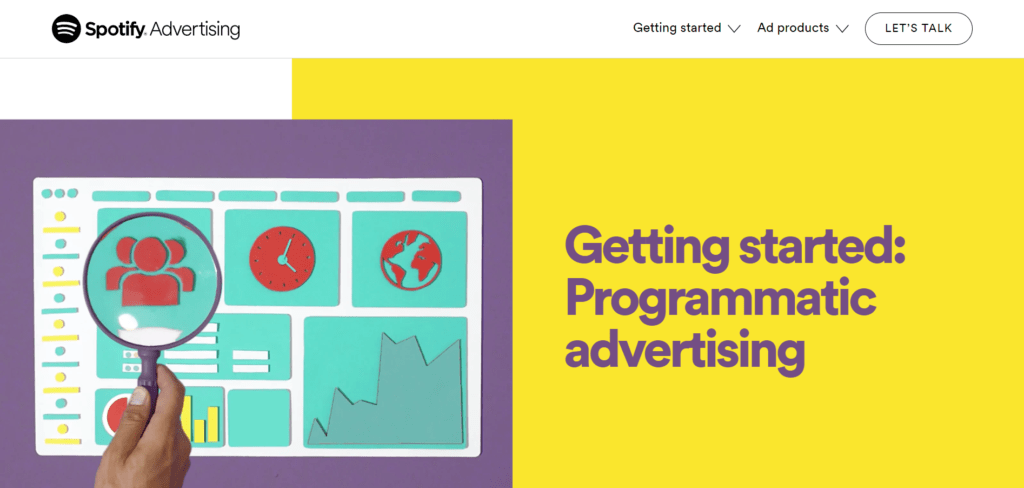
Strategy
To achieve this goal, Spotify leveraged user behavior and music preferences data to deliver highly personalized ads to its users. They analyzed data on user listening habits, including the genres of music they listened to, the frequency of their listening habits, and the time of day they listened. By leveraging this data, Spotify delivered highly targeted ads that resonated with its users.
For example, if a user listened to a lot of indie music, Spotify would deliver ads for indie music festivals and events in their area. Spotify would deliver ads for podcast-related products and services if a user frequently listened to podcasts.
Outcomes
The results of Spotify’s programmatic advertising campaign were impressive. By delivering highly personalized ads, Spotify achieved an engagement rate 2.5 times higher than the industry average. They also saw a 25% increase in ad recall among their users.
In addition to higher engagement rates, Spotify’s programmatic advertising campaign improved its return on investment. By delivering more relevant and targeted ads, Spotify reduced its cost per acquisition by 20%. That resulted in higher revenue and better profitability for the company.
Key Takeaways
By delivering highly personalized ads, Spotify achieved higher engagement rates and better return on investment while improving its brand reputation and customer relationships.
- The success of Spotify’s programmatic advertising campaign highlights the importance of leveraging data to deliver personalized ads.
- By analyzing user behavior and preferences, companies can deliver more relevant and engaging ads to their target audience.
- It not only improves engagement rates and return on investment but also helps to build brand loyalty and long-term customer relationships.
- Spotify’s programmatic advertising campaign is a great example of how leveraging data can lead to successful advertising campaigns.
McDonald’s Campaign: Dynamic Creative Optimization and Geotargeting
McDonald’s is a fast-food chain that leverages programmatic advertising to reach its target audience with relevant and personalized ads. Their programmatic advertising campaign aimed to drive foot traffic to their physical stores and increase sales.
Strategy
McDonald’s used dynamic creative optimization and geotargeting strategies to achieve this goal in its programmatic advertising campaign. Dynamic creative optimization involves delivering ads tailored to the user’s preferences and behavior. Geotargeting involves delivering ads that are relevant to the user’s location.
For example, a user located near a McDonald’s restaurant might receive an ad for a new menu item or promotion available at that specific location. McDonald’s also used data on weather conditions and time of day to deliver ads more relevant to the user’s current situation.
Outcomes
The results of McDonald’s programmatic advertising campaign were impressive. They increased foot traffic to their physical stores by 7.5%, resulting in a 4.5% increase in sales. It was achieved through dynamic creative optimization and geotargeting, which helped deliver more relevant and personalized ads to their target audience.
In addition to higher foot traffic and sales, McDonald’s programmatic advertising campaign also helped to improve brand perception and customer engagement. By delivering ads tailored to the individual user’s preferences and behavior, McDonald’s was able to build stronger relationships with their customers and improve their overall brand reputation.
Key Takeaways
By using dynamic creative optimization and geotargeting strategies, McDonald’s increased foot traffic to their physical stores and improved sales while also improving their brand perception and customer engagement.
- The success of McDonald’s programmatic advertising campaign highlights the importance of personalization and relevance in advertising.
- By leveraging data on user behavior and preferences, companies can deliver more relevant and engaging ads to their target audience.
- It improves engagement rates and sales and helps build long-term customer relationships and brand loyalty.
- McDonald’s programmatic advertising campaign is a great example of how personalization and relevance can lead to successful advertising campaigns.
Coca-Cola Campaign: Real-Time Bidding and Cross-Device Targeting
Coca-Cola is a multinational beverage corporation that uses programmatic advertising to reach its target audience across various channels and devices. Their programmatic advertising campaign aimed to increase brand awareness, drive engagement, and boost sales of their products.
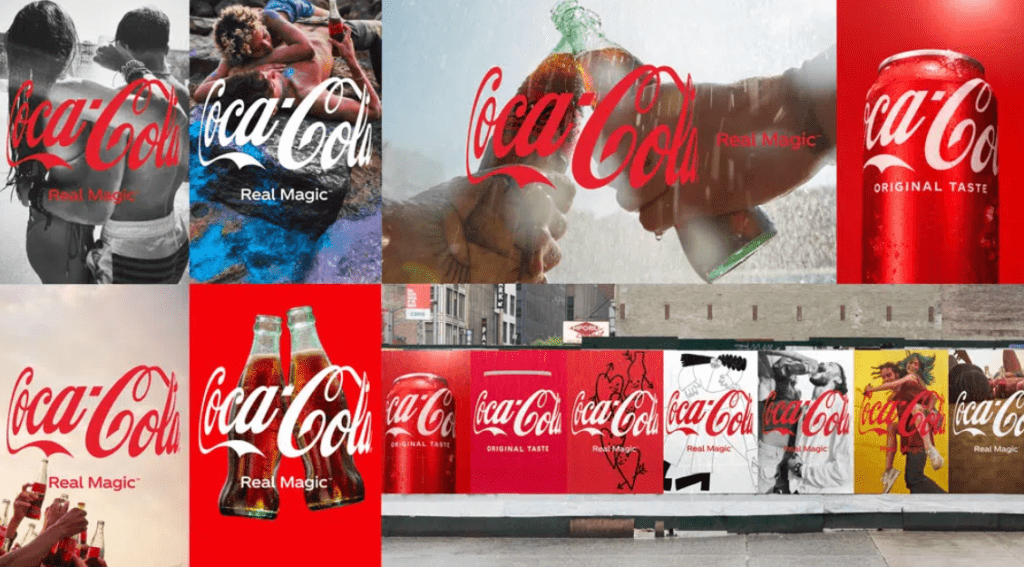
Strategy
To achieve this goal, Coca-Cola used real-time bidding (RTB) and cross-device targeting strategies in its programmatic advertising campaign. RTB involves purchasing ad inventory in real-time through an automated bidding process, allowing Coca-Cola to target its audience more effectively and efficiently.
Cross-device targeting involves delivering ads to users across multiple devices, including desktop, mobile, and tablet. This strategy helped Coca-Cola to reach its audience regardless of which device they were using and to deliver a more seamless and consistent brand experience.
Outcomes
The results of Coca-Cola’s programmatic advertising campaign were impressive. They improved engagement rates by 18% and increased sales by 11%. It was achieved through RTB and cross-device targeting, which allowed Coca-Cola to reach its audience more effectively and deliver more relevant and personalized ads.
In addition to higher engagement rates and sales, Coca-Cola’s programmatic advertising campaign also helped to improve brand perception and customer loyalty. By delivering ads that were tailored to the individual user’s preferences and behavior, Coca-Cola was able to build stronger relationships with its customers and improve its overall brand reputation.
Key Takeaways
The success of Coca-Cola’s programmatic advertising campaign highlights the importance of personalization and efficiency in advertising.
- By leveraging data on user behavior and preferences, companies can deliver more relevant and engaging ads to their target audience.
- By using RTB and cross-device targeting, companies can achieve this more efficiently and cost-effectively.
- Coca-Cola’s programmatic advertising campaign is a great example of how personalization and efficiency can lead to successful advertising campaigns.
- By using RTB and cross-device targeting strategies, Coca-Cola was able to improve engagement rates and sales while also improving its brand perception and customer loyalty.
Read More: Programmatic Video: What It Is, How It Works, Benefits, and Future
Airbnb’s Programmatic Advertising Campaign
Airbnb is an online marketplace that makes it possible for people to rent out their properties or spare rooms to travelers. To promote their platform and increase bookings, Airbnb implemented a programmatic advertising campaign.
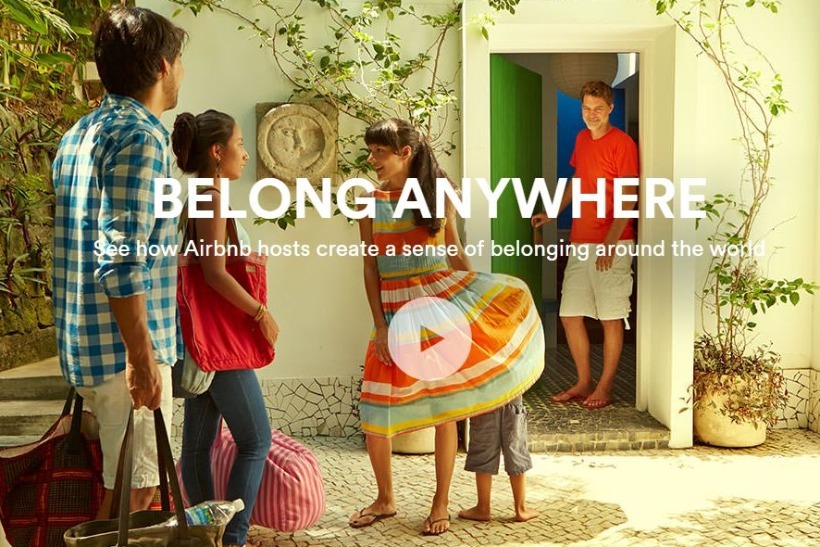
Goals
Airbnb’s programmatic advertising campaign aimed to increase its brand awareness and drive more traffic to its website, increasing bookings. The campaign targeted people interested in travel and accommodation and likely to book a place to stay through online platforms.
Strategy
Airbnb used programmatic advertising to reach its target audience through various channels, including display, video, and mobile ads. They utilized data and analytics to optimize their ad placements and ensure their ads were shown to the right audience. They also used dynamic creative optimization (DCO) to personalize their ads and make them more engaging for each user.
Outcomes
Airbnb’s programmatic advertising campaign was highly successful, resulting in a 15% increase in brand awareness and a 6% increase in website traffic. Additionally, the campaign generated a return on ad spend (ROAS) of 3:1, meaning that for every dollar spent on advertising, Airbnb earned three dollars in revenue.
One specific example of the success of Airbnb’s programmatic advertising campaign was their partnership with Disney’s Pixar for the release of the movie “Up.” Airbnb created a campaign called “Night At” that allowed users to enter a contest to win a night’s stay in a replica of the house from the movie. The campaign utilized programmatic advertising to reach the target audience and generated over 4.4 million entries.
Key Takeaways
- Airbnb’s programmatic advertising campaign showcases the power of data and analytics in advertising.
- By utilizing programmatic technology, Airbnb was able to reach its target audience and personalize its ads for each user.
- The success of their “Night At” campaign also highlights the importance of creativity in programmatic advertising and the value of partnerships and collaborations with other brands.
Amazon’s Programmatic Advertising Campaign: Driving Sales
Amazon’s programmatic advertising campaign is one of the most successful examples of programmatic advertising.
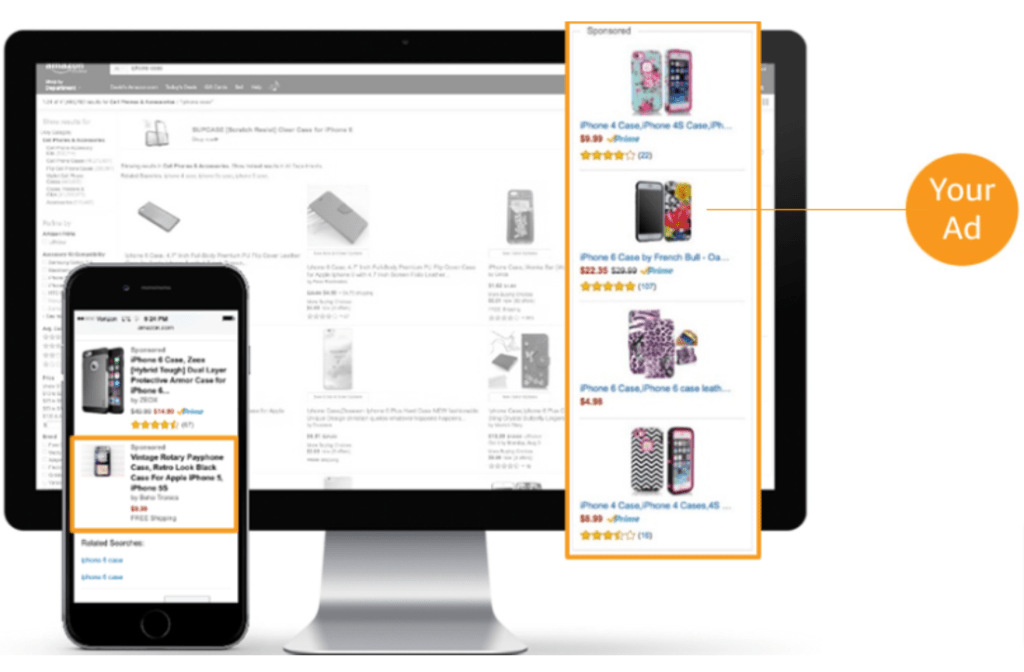
Goals
Amazon aimed to increase brand awareness and drive sales through programmatic advertising. They aimed to reach a larger audience by targeting relevant users across various devices and platforms.
Strategies
Amazon used programmatic advertising to reach users across different channels and devices, including desktop, mobile, and tablets. They used a combination of display ads and video ads to capture users’ attention and promote their products.
To make their programmatic advertising campaign more effective, Amazon used data-driven insights to optimize their campaigns. They leveraged data on consumer behavior and preferences to create personalized ad experiences and target users with relevant content.
Outcomes
Amazon’s programmatic advertising campaign was a huge success. They were able to increase brand awareness, drive sales, and achieve their campaign goals. According to a case study by Google, Amazon’s programmatic advertising campaign led to a 20% increase in revenue and a 35% increase in return on ad spend (ROAS).
Key Takeaways
Amazon’s programmatic advertising campaign is an excellent example of how programmatic advertising can drive business results.
- Amazon’s programmatic advertising campaign provides valuable insights into how data-driven insights can be used to optimize programmatic advertising campaigns.
- By using data to target relevant users with personalized ads, Amazon increased brand awareness and drove sales.
- The success of their campaign also highlights the importance of using a combination of display and video ads to capture users’ attention and promote products effectively.
Nike’s Campaign: Increasing Brand Awareness and Engagement
Nike is a global brand known for its innovative products and creative marketing campaigns. Its first programmatic advertising campaign was launched in 2014, and since then, the brand has consistently used programmatic advertising to target its customers with personalized and relevant ads.
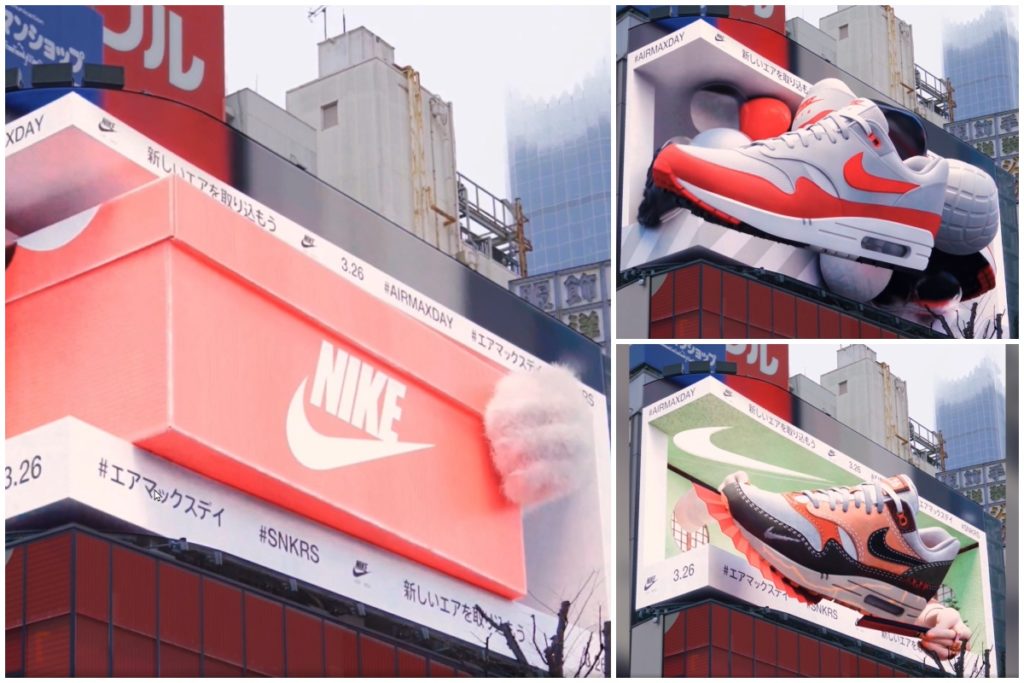
Goals
The primary goal of Nike’s programmatic advertising campaign was to increase brand awareness, engagement, and sales. The brand wanted to reach its target audience with personalized messages and creative ads to inspire them to act. Nike also wanted to improve the efficiency and effectiveness of its advertising campaigns by using programmatic technology to automate the ads.
Strategies
Nike’s programmatic advertising campaign was executed in three stages. In the first stage, the brand used data analytics to understand its customers’ behavior and preferences. Nike collected data from various sources, including its website, social media channels, and mobile apps, to create customer profiles and target its ads more effectively.
In the second stage, Nike used programmatic technology to automate the buying and selling of ads. The brand partnered with ad exchanges and demand-side platforms (DSPs) to reach its target audience across multiple channels, including display, video, and mobile. Nike also used real-time bidding (RTB) to optimize its ad spend and ensure that its ads were shown to the right people at the right time.
In the third stage, Nike used dynamic creative optimization (DCO) to personalize its ads and improve their relevance to each customer. The brand used location, weather, and user behavior data to create ads tailored to each customer’s context and interests.
Outcomes
Nike’s programmatic advertising campaign was a huge success. The brand reached its target audience with relevant and personalized messages, increasing engagement and conversion rates. Nike’s programmatic campaigns generated a 300% increase in click-through rates and a 200% increase in conversions compared to its traditional advertising campaigns.
One example of a successful programmatic advertising campaign by Nike is its “Choose Your Winter” campaign. Nike used DCO to create dynamic ads that featured different products and messages depending on the user’s location and weather conditions. The campaign generated a 200% increase in click-through rates and a 300% increase in conversions compared to traditional advertising campaigns.
Key Takeaways
Nike’s programmatic advertising campaign provides several valuable lessons for marketers looking to use programmatic technology to improve their advertising campaigns. Here are some of the key takeaways:
- Use data analytics to understand your customers’ behavior and preferences.
- Use programmatic technology to automate the buying and selling of ads and optimize your ad spend.
- Use dynamic creative optimization to personalize your ads and improve their relevance to each customer.
- Focus on the customer journey and use programmatic technology to deliver personalized messages at each funnel stage.
Nike’s programmatic advertising campaign is a great example of how brands can use programmatic technology to reach their target audience with relevant and personalized messages.
Using data analytics, programmatic technology, and dynamic creative optimization, Nike was able to improve the efficiency and effectiveness of its advertising campaigns and generate impressive results. Marketers can learn much from Nike’s programmatic advertising campaign and use these insights to improve their campaigns.
BMW’s Campaign: Driving Innovation
BMW is a leading luxury car brand that has been innovative in its use of programmatic advertising. Let’s take a look at the goals, strategies, and outcomes of BMW’s first programmatic advertising campaign.
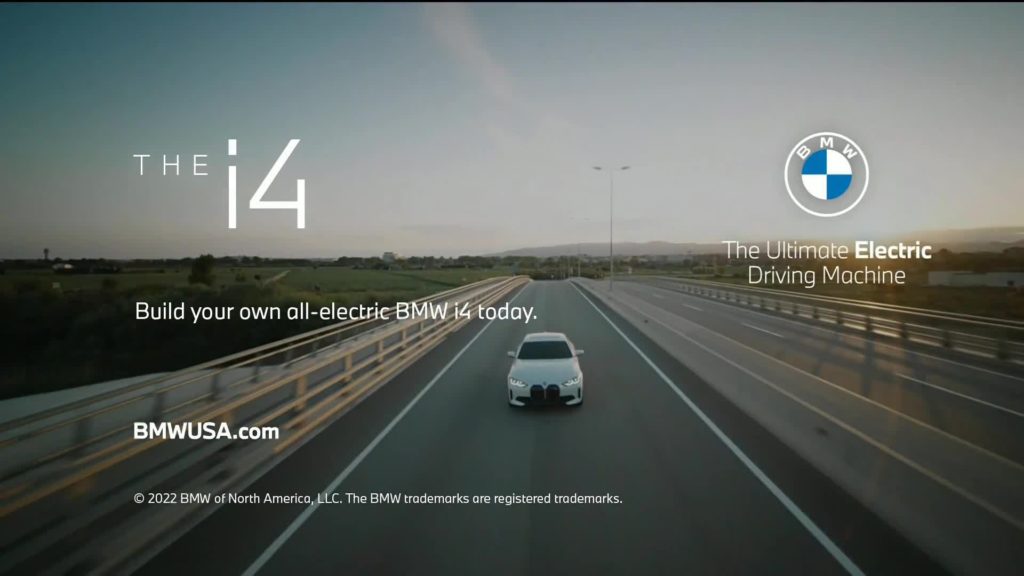
Goals
The primary goal of BMW’s programmatic advertising campaign was to increase awareness and consideration of their new BMW i3 electric vehicle among environmentally conscious consumers. The campaign aimed to reach a broad audience across various devices and platforms, including desktop, mobile, and tablet devices.
Strategies
To achieve its goals, BMW worked with its advertising agency, Universal McCann, to develop a programmatic advertising strategy that targeted environmentally conscious consumers across multiple channels. The strategy included a range of tactics, including:
- Geotargeting: BMW used geotargeting to reach consumers who lived in urban regions with high levels of air pollution. It was done to highlight the benefits of driving an electric car in a city environment.
- Contextual Targeting: BMW targeted websites focusing on environmental issues, sustainable living, and green energy to reach an audience already interested in the topic.
- Retargeting: BMW used retargeting to reach consumers who had previously shown an interest in electric cars or had visited BMW’s website.
- Cross-Device Targeting: BMW targeted consumers across various devices and platforms, including desktop, mobile, and tablet devices. It was done to ensure that the campaign reached the widest possible audience.
Outcomes
The results of BMW’s programmatic advertising campaign were impressive. The campaign generated over 30 million impressions and reached 2.7 million unique users across multiple devices and platforms. The campaign also achieved a click-through rate (CTR) of 0.12%, which was above the industry average for programmatic advertising campaigns at the time.
BMW’s first programmatic advertising campaign successfully achieved its goals of increasing awareness and consideration of its new BMW i3 electric vehicle among environmentally conscious consumers.
Key Takeaways
- The campaign’s use of geotargeting, contextual, retargeting, and cross-device targeting effectively reached a broad audience across multiple channels.
- The campaign’s outcomes, including 30 million impressions, 2.7 million unique users, and a CTR of 0.12%, demonstrate the power of programmatic advertising when used effectively.
Check Here: How to Master Your Programmatic Buying in 2023: A Complete Guide
Summary and Key Points
After discussing the seven programmatic advertising campaigns, we can identify some commonalities and key takeaways that can help guide future campaigns.
- Personalization is Key
Personalization was a key factor in their success across all campaigns. By leveraging data and technology to deliver tailored messages to specific audiences, brands were able to increase engagement and drive conversions.
- Creative Execution Matters
While personalization is important, it is not enough. The creative execution of the campaign also plays a crucial role in capturing the audience’s attention and driving engagement. Brands that created visually appealing and emotionally resonant ads were more likely to see success.
- Testing And Optimization Are Crucial
All seven campaigns employed a constant testing and optimization strategy. By analyzing data in real-time and making changes to the campaign based on performance, brands could maximize their ROI and ensure that their messages resonate with their target audience.
- Goals Should Be Specific and Measurable
Each campaign had specific goals, allowing the brands to track their progress and adjust their strategies as needed. It helped to ensure that the campaigns were aligned with overall business objectives and that resources were being used efficiently.
- Adapting To New Technology Is Essential
Programmatic advertising is an ever-evolving field, and brands that can stay on top of new developments and adapt quickly are more likely to see success. It includes staying up-to-date on changes to ad platforms and targeting options, as well as new technology like artificial intelligence and machine learning.
Want to know more about programmatic advertising and what it can do for your business? Sign up here and visit our ad revenue optimization page to learn more.
FAQ
Programmatic advertising uses software to automate the buying and selling of digital advertising. It involves using algorithms, data, and machine learning to target specific audiences and optimize real-time ad placement.
The benefits of programmatic advertising include increased efficiency, more precise targeting, and better ROI. Programmatic advertising can save time and money while delivering more relevant ads to the right audience by automating the buying and selling process.
Some challenges of programmatic advertising include ad fraud, brand safety concerns, and the need for transparency. Advertisers must work with trusted partners and employ effective fraud detection measures to minimize risk.
To get started with programmatic advertising, you’ll need to work with a demand-side platform (DSP) or advertising network that offers programmatic advertising capabilities. It’s also important to clearly understand your target audience and campaign goals before getting started.

Shubham is a digital marketer with rich experience working in the advertisement technology industry. He has vast experience in the programmatic industry, driving business strategy and scaling functions including but not limited to growth and marketing, Operations, process optimization, and Sales.



![CTV vs OTT Advertising: Which one is Right Pick for Publishers? + [6 Bonus Strategies] Ott vs Ctv](png/featured-image-270x180.png)

